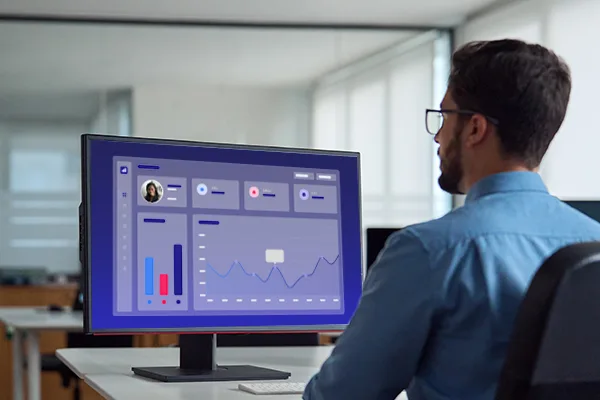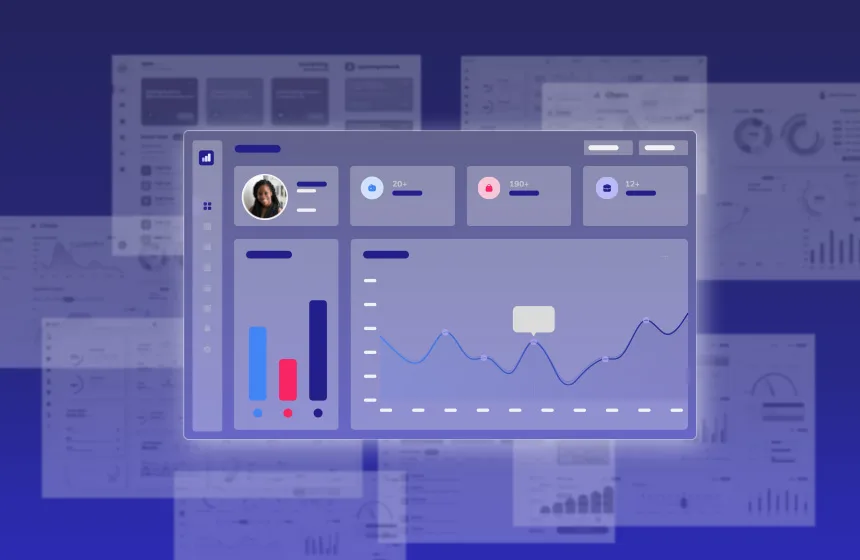Accelerate deals and increase win rates with the leading enterprise demo platform.
How a Demo Builder Can Transform Your Product Demos

February 4, 2025
Table of Contents
It’s no secret to anyone operating a B2B SaaS business that a compelling product demo can make or break a deal. Presales teams are the linchpin of this process, tasked with showcasing products in a way that directly resonates with prospects’ needs. But traditional demo creation often comes with a host of challenges—time-consuming setups, limited flexibility, and the constant risk of something going wrong in a live environment.
This is where a demo builder, or demo platform, can make a significant impact. In this blog, we’ll explore how a demo builder works, the benefits it brings, and why it’s a must-have tool for presales leaders looking to close deals faster and more efficiently.
What is a Demo Builder?
A demo builder, sometimes referred to as a demo platform or demo creation software platform, is a specialized tool designed to simplify the creation and delivery of product demos. Unlike traditional demo setups that rely on live environments or require heavy engineering support, a demo builder allows presales teams to create interactive, customizable demos without extensive technical expertise.
Demo builders empower teams to showcase the product in a controlled, risk-free environment, highlighting its core capabilities and tailoring the experience to specific use cases. Demo platforms underpin organizations looking to build ready-to-use demos that are easy to share, reuse, and scale across different audiences, from prospects and customers to internal teams.
Unlike static slide decks, product videos, or risky live demonstrations, demo platforms combine interactivity with reliability, creating engaging experiences that leave a lasting impression. For SaaS companies, this means better prospect engagement, streamlined presales workflows, and a competitive edge in the sales process.
Traditional Product Demos: The Struggle is Real
Creating product demos using traditional methods often requires significant time and effort, leading to inefficiencies and frustration for presales teams. Here are some of the most common challenges:
- Time-Consuming Setup Processes: Building demos in live environments often involves configuring complex systems, aligning with engineering teams, and managing backend data. This manual work can delay sales cycles and take valuable time away from customer engagement.
- Limited Customization: Traditional demos are often one-size-fits-all, making it difficult to tailor them to specific industries, use cases, or individual prospects. This lack of flexibility can prevent teams from fully addressing the unique needs of each customer.
- Risk of Technical Issues: Live demos depend on functioning environments, stable internet connections, and error-free software. A single glitch—whether latency, system downtime, or a data misconfiguration—can derail a presentation and damage credibility.
- Scalability Constraints: It’s hard to train every sales rep or team member to deliver consistent, high-quality demos. Traditional methods are often too resource-intensive to scale effectively, leading to bottlenecks and reliance on a few technical experts.
- Inconsistent Messaging: Without standardized demo assets, different team members may present the product in varying ways, which can result in mixed messages.
Key Benefits of Using a Demo Builder
A demo builder, or demo platform, offers numerous benefits that address the challenges of traditional demo creation, such as:
- Customization at Scale: Demo builders make it easy to tailor demos to different industries, personas, or use cases. Whether showcasing specific features for a technical audience or emphasizing business outcomes for executives, teams can quickly create personalized experiences that resonate.
- Efficiency: By eliminating the need for manual setup and reducing reliance on engineering resources, demo builders free up SEs to spend more time with prospects. Reusable templates and drag-and-drop functionality streamline workflows, speeding up demo creation.
- Reduced Risk: Demo platforms eliminate risks associated with demoing on the live environment like downtime, data breaches, or unexpected system errors. Teams can focus on the conversation, not troubleshooting.
- Scalability Across Teams: With a demo builder, companies can equip every team member—from sales reps to customer success teams—with ready-to-use demo assets. This facilitates scale while maintaining consistent messaging and wider adoption of demo best practices.
- Enhanced Interactivity: Modern demo platforms allow prospects to engage with the product in a hands-on way. Interactive demos encourage exploration, building trust and confidence in the product’s capabilities.
- Actionable Insights: Many demo platforms provide analytics to track engagement and identify areas of interest. This data helps presales teams refine their approach and prioritize follow-ups, ultimately improving win rates.
Choose the Right Demo Builder
Selecting the right demo platform for building demos is important. The checklist below outlines some of the options to consider.
| Ease of use | Look for a demo builder with an intuitive interface without requiring extensive training or technical expertise. Drag-and-drop editors and pre-built templates can save valuable time. |
| Integrations | Make sure the demo platform integrates seamlessly with your existing tools, such as CRM systems (e.g., Salesforce, HubSpot) or analytics platforms. This streamlines workflows and improves data tracking. |
| Customization options | Choose a solution that allows for deep customization. This includes tailoring demos to specific industries, use cases, or personas, as well as adding branding elements for a polished, professional presentation. |
| Security and compliance | With sensitive data often involved in demos, prioritize platforms with strong security measures, such as role-based access control, data encryption, and compliance with industry standards (e.g., GDPR, SOC 2). |
| Analytics and insights | A demo builder with robust analytics can provide valuable data on how prospects interact with your demos. These insights help refine future demos, prioritize follow-ups, and improve overall conversion rates. |
| Team enablement / scalability | Assess whether the platform can scale with your team’s needs. Consider features like shared demo libraries, user permissions, and the ability to create reusable demo assets that can be accessed by different departments. |
| Vendor support and training | Strong customer support and training resources can make a big difference, especially during the onboarding phase. Look for vendors with a reputation for excellent support and comprehensive documentation. |
By carefully evaluating these criteria, you’ll be better positioned to select a demo builder that aligns with your team’s goals and sets you up for long-term success.
Demo Builders Can Change the Game
Delivering standout product demos is more important than ever. Traditional demo creation methods often fall short, leaving presales teams bogged down with inefficiencies and unable to deliver the tailored experiences prospects expect.
By streamlining demo creation, enabling customization, and providing powerful insights, a demo builder or demo platform empowers presales leaders to work smarter, not harder.
Ready to elevate your demos and win more deals? Discover how Reprise can help you transform your demo strategy and take your presales program to the next level.






